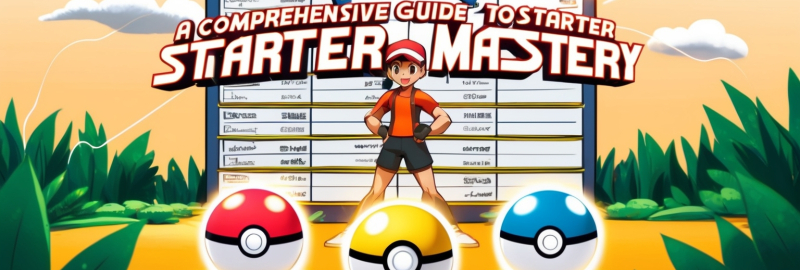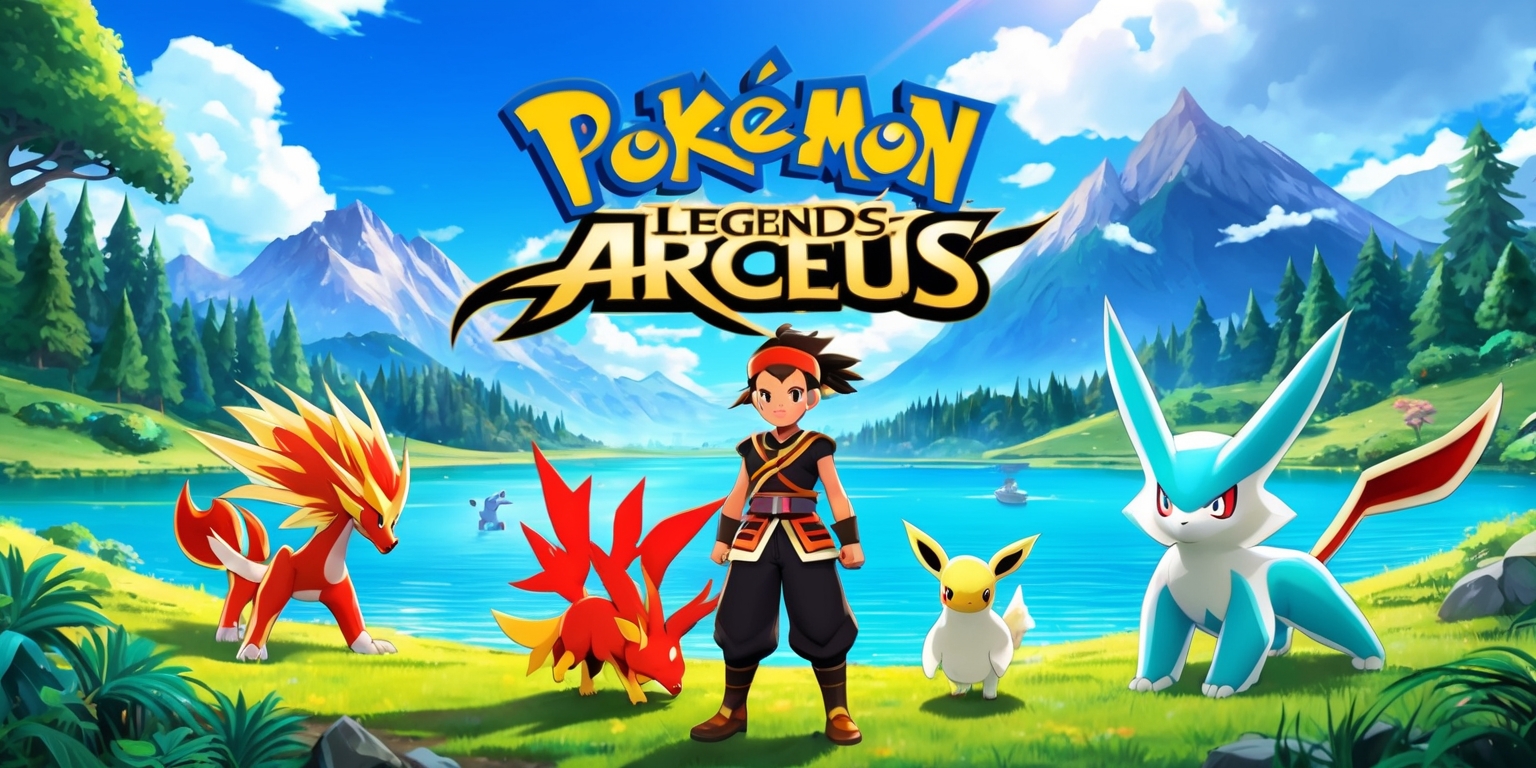
The dynamic realm of Pokémon Legends: Z-A presents a diverse pathway for trainers seeking to master the art of team building. With the compelling opportunity to not only choose a single starter at the beginning, but also to eventually obtain all three cherished companions, the game offers an enriched journey filled with strategic decisions and hidden treasures. This expansive narrative invites players to explore post-game challenges, discover secret zones, and appreciate each Pokémon’s unique attributes in gameplay mechanics, aesthetics, and functionality. Whether your choice is driven by nostalgia, strategy, or pure admiration, the adventure ahead promises a balanced blend of exploration and tactical development that caters to both new trainers and seasoned enthusiasts.
Embarking on the Journey with a Singular Companion
In the early chapters of your adventure in Pokémon Legends: Z-A, you are introduced to the significant decision of choosing your primary starter. Whether your heart leans towards the steadfast Chikorita, the fiery Tepig, or the fluid Totodile, every option comes with its own narrative weight and gameplay perks. At the initial stages, a trusted partner is offered by either Urbaine or Taunie, symbolizing the bond that will grow over your shared journey. The decision is far from trivial, as it sets the tone for your early encounters, battles, and interactions with the environment. Despite the bittersweet feeling of leaving other enticing options behind, the game reassures you that your chosen path will eventually lead to the opportunity to embrace the strengths of each sibling Pokémon as you progress further into a beautifully crafted world.
Unlocking the Post-Game Domain of Rare Encounters
Once the main storyline draws to a close, Pokémon Legends: Z-A surprises players with exciting post-game content hidden within a new Wild Zone. This fresh area, aptly designated as Wild Zone 20, emerges at the heart of the map and transforms the gaming experience by offering a chance to acquire the remaining starters you initially missed. Only accessible after the official credits roll and a brief narrative progression involving conversations with friends at Hotel Z and visits to Centrico Plaza, Wild Zone 20 represents a reward for your perseverance. The design of this zone encourages thorough exploration and revisiting familiar mechanics in fresh contexts. Its strategic placement and thoughtful layout allow trainers to refine their battling techniques while discovering the rich layers of lore and interactivity embedded within the game.
Locating the Hidden Treasures Within Wild Zone 20
Wild Zone 20 is a meticulously crafted area that holds the key to capturing each of the three coveted starter Pokémon. In this zone, every terrain tells a story; Totodile can be found lingering by the water’s edge, Chikorita roams within expansive grassy clearings, and Tepig makes its presence felt in regions marked by brick-like structures. The deliberate environmental design not only enhances the overall aesthetics of the game but also compels players to modify their tactics in response to the surroundings. The distinct habitats ensure that each Pokémon encounter becomes memorable, as players must transition smoothly between water, grass, and urban textures. This dynamic setting amplifies the thrill of discovery, inviting trainers to appreciate the intricacy of the game’s visual storytelling and the carefully balanced mechanics that allow for a seamless connection between exploration and combat.
Strategizing the Pursuit of Additional Companions

The game’s structure ingeniously bridges the gap between the excitement of initial selection and the rewards of meticulous exploration. Prior to entering Wild Zone 20, players must advance the post-game narrative by engaging in key interactions with trusted allies, thereby unlocking further segments of the expansive world. This phased approach reinforces the concept that success is not instantaneous, but rather earned through persistence and thoughtful navigation of challenges. Such design choices ensure that the acquisition of the additional starters offers more than just a mechanical benefit—it enriches the storyline. For many trainers, the journey involves balancing battle readiness with an enduring curiosity for what mysteries lie beyond the immediate horizon, underscoring the game’s emphasis on incremental rewards as the plot deepens and shifts into uncharted territories.
Acquiring Mega Stones: A Critical Augmentation to Combat Prowess
The evolution of your Pokémon is significantly enhanced through the acquisition of Mega Stones, which provide transformative boosts during critical battles. Following an early confrontation with an imposing Mega Absol and the subsequent recovery of the Absolite, the game rewards your efforts by presenting one of the trio’s Mega Stones linked directly to your chosen partner. However, the desire to empower the other two Pokémon does not vanish with initial decisions. In the post-game phase, trainers find that the corresponding Mega Stones for the remaining starters become available for purchase, albeit at a steep cost at the Stone Emporium on Vernal Avenue. This economic challenge introduces a layer of resource management, urging players to balance their expenditures while planning for a multipronged team strategy. Each Mega Stone not only beautifies the aesthetics of character evolution but also endows Pokémon with enhanced abilities that can tip the scales in tightly contested battles.
Delving into the Nuanced Aesthetics and Functional Design
The visual storytelling in Pokémon Legends: Z-A is as critical as its gameplay mechanics. The world is painted with meticulous detail, where natural landscapes blend with urban motifs, offering playgrounds of diverse textures and environments. The character designs, from the animated expressions of Pokémon to the intricate backdrops of centric cities and obscure wild zones, speak volumes to the game’s commitment to immersive experiences. Pokémon undergo stunning Mega Evolutions that do not just alter their appearance but also complement their functional attributes. This harmonious blend of aesthetics and functionality challenges players to adapt their strategies, a design philosophy that favors both visual delight and deep tactical gameplay. The elaborate design ensures that every journey through the game is layered with both strategic import and an appreciation for artistic detail.
Examining the Strengths and Tactical Edge of Tepig
Within the trio of classic starter Pokémon, Tepig emerges as a standout choice for many trainers who favor an offensive playstyle. Statistically, Tepig’s evolution into a dual-typed warrior marks it as a robust option for those inclined towards a higher base attack. The inherent power of Tepig means that even its early forms pack a punch, making it well-suited for demanding battles. Although its defensive properties might not Achieve a level of prominence equal to that of several of its peers, the offensive prowess can easily counterbalance such deficiencies when played with a spirited strategy. For trainers who value a direct and impactful approach during combat, Tepig offers an experience where aggressive tactics and measured risks result in satisfying victories. Its evolution trajectory provides not only an impressive visual transformation but also a concrete enhancement to battle capabilities that many find irresistible.
Unpacking the Unique Attributes of Chikorita
Chikorita, often appreciated for its charm and agility, presents a different tactical appeal that contrasts with its more aggressive kin. While often deemed statistically less potent in raw power, Chikorita compensates with superior speed and an excellent special defense. Its transformation during Mega Evolution introduces an additional Fairy-type quality, allowing it to navigate battle scenarios with a refined edge. The swift movements and agility become crucial in encounters that require quick thinking and deft maneuvers, where speed can outmatch brute force. Chikorita’s delicate balance of strength and finesse makes it particularly attractive to players who favor a strategy centered on quick positional changes and exploiting enemy vulnerabilities. The visual evolution further enhances its aesthetic appeal, cementing its place not only as a competitive choice in battles but additionally recognized as a cherished figure in the game’s rich roster.
Revisiting the Balanced Versatility of Totodile
Totodile occupies a revered position for those who value a harmonious balance in their Pokémon team strategy. Recognized for its impressive base stat total, Totodile’s evolution offers a well-rounded approach in delivering physical attacks without sacrificing defensive potential. Its classification as a Water-type physical attacker ensures that each move is delivered with calculated precision, lending itself to a style that meticulously blends offense with resilience. The subsequent Mega Evolution introduces an unexpected twist by incorporating an additional Dragon-type aspect, vastly expanding its versatility in battle. Trainers who wield Totodile must appreciate the nuanced balance between power and stability, where each decision in combat is measured against a backdrop of strategic foresight. The amalgamation of raw strength and adaptive capability makes Totodile a compelling choice for a well-balanced team composition.
Integrating Your Team to Maximize Gameplay Dynamics
Effective team composition in Pokémon Legends: Z-A extends beyond choosing individual Pokémon based solely on personal affinity or isolated strengths. The critical aspect lies in integrating the diverse attributes of each starter into a cohesive combat unit. Whether it is the explosive attack strength of Tepig, the agile resilience of Chikorita, or the balanced might of Totodile, combining these Pokémon into one team opens up a multitude of tactical opportunities. The game encourages a strategy built on type coverage and complementary movesets, ensuring that the diverse challenges throughout the game can be met holistically. By carefully balancing your team’s elements, you pave the way for a synergistic experience that emphasizes both strategic deployment in battles and dynamic adaptability within diverse environments. Such integration It not only elevates the gaming experience but also bolsters the… depth of strategic planning that Pokémon Legends: Z-A has to offer.
Exploring the Broader Mechanics Behind Post-Game Acquisitions
The opportunity to capture all three starter Pokémon post-game deepens the narrative of evolution and acquisition that is central to Pokémon Legends: Z-A. Beyond the act of merely selecting a starter at the beginning, the game weaves an intricate system of rewards that become accessible only after one has navigated the full arc of the story. This design choice firmly places an emphasis on tenacity and exploration, as players must complete specific tasks and meet key narrative prerequisites. The gradual unlocking of additional companions symbolizes the journey’s progression, imbuing each new encounter with a sense of achievement and discovery. The narrative interludes involving interactions with characters such as Vinnie and visits to culturally significant locales enhance this framework, setting the stage for a reward system that is as gratifying as it is challenging. In this way, the game transforms conventional starter selection into a comprehensive experience of growth and strategic planning.
